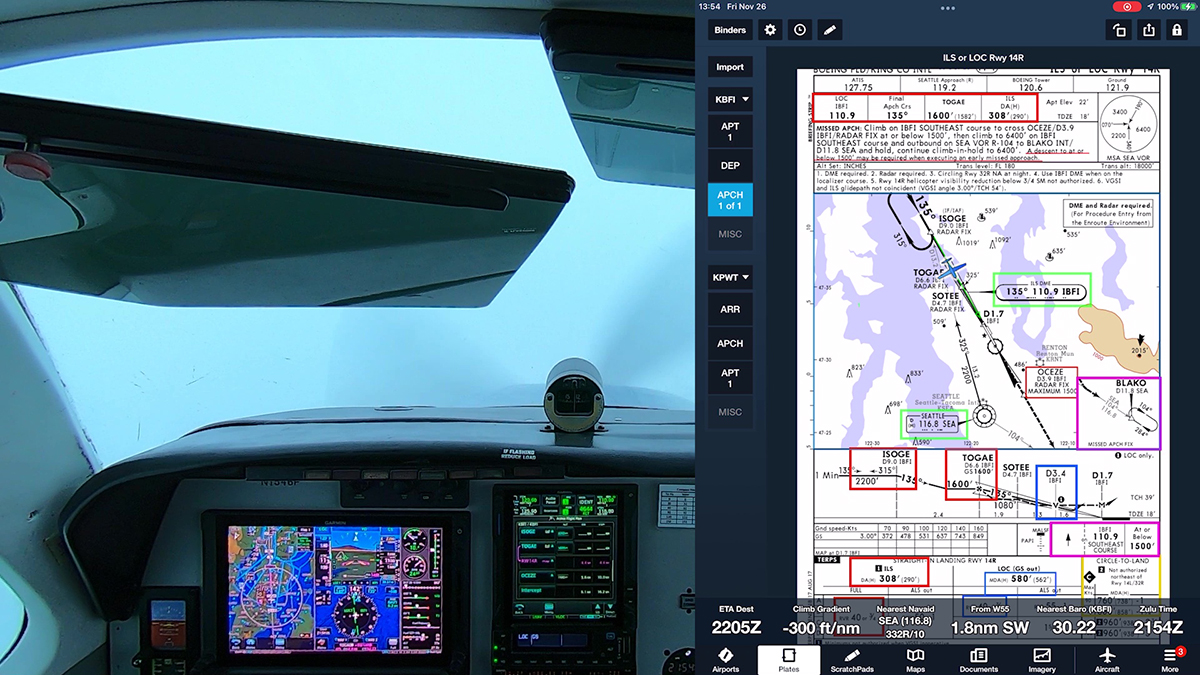

Today, most instrument-rated pilots are familiar with and using RNAV (GPS) approaches. The majority of RNAV approaches resemble procedures based on ground-based navigation aids, such as VORs and ILSs. They include charted feeder routes from airways or fixes, each with clearly labeled courses and minimum altitudes to fly, that lead to the final approach segment (see Figure 1).

Figure 1: The plan view of the RNAV (GPS) RWY 24 approach (PDF) at Hoquiam, WA (KHQM).
Some RNAV approaches depend on a different method of handling the transition from the en route environment to the approach, and that system, called Terminal Arrival Areas (TAA), confuses many pilots. On a chart, TAA look like pieces of pie (see Figure 2).

Figure 2:
The plan view of the RNAV (GPS) RWY 13 approach (PDF) at Tillamook, OR (KTMK), with TAA highlighted.
You can find detailed descriptions of TAA in several official sources, including:
According to the AIM:
The objective of the TAA is to provide a seamless transition from the en route structure to the terminal environment for arriving aircraft equipped with Flight Management System (FMS) and/or Global Positioning System (GPS) navigational equipment. The underlying instrument approach procedure is an area navigation (RNAV) procedure…The TAA provides the pilot and air traffic controller with a very efficient method for routing traffic into the terminal environment with little required air traffic control interface, and with minimum altitudes depicted that provide standard obstacle clearance compatible with the instrument procedure associated with it. The TAA will not be found on all RNAV procedures, particularly in areas of heavy concentration of air traffic.”
The IPH also notes that “Normally, a portion of the TAA underlies an airway. If this is not the case, at least one feeder route is provided from an airway fix or NAVAID to the TAA boundary.” It’s also important to understand that, per the AIM, “When the TAA is published, it replaces the MSA for that approach procedure.”
In other words, TAA effectively replace feeder routes, and they enable ATC to issue succinct, efficient clearances to RNAV-capable aircraft flying along an airway that passes over or near an airport or proceeding direct toward an airport from any direction. Using TAA eliminates the need for a series of vectors, which also makes them useful in areas where ATC may have poor radar coverage at the altitudes typically needed to guide airplanes onto feeder routes or the final approach course.
To learn more details about TAA, you can read the references cited above.
The big issue for pilots cleared to fly an approach via a TAA is how to interpret ATC clearances—in particular, when and how low to descend during the initial stages of the approach.
The AIM and IPH both offer the following guidance:
Pilots entering the TAA and cleared by air traffic control, are expected to proceed directly to the IAF associated with that area of the TAA at the altitude depicted, unless otherwise cleared by air traffic control. Clear[ance] direct to an Initial Approach Fix (IAF) without a clearance for the procedure does not authorize a pilot to descend to a lower TAA altitude. If a pilot desires a lower altitude without an approach clearance, request the lower TAA altitude. If a pilot is not sure of what they are authorized or expected to do by air traffic, they should ask air traffic or request a specific clearance.
The IPH includes several examples of typical ATC clearances (p. 4-9). In general, “Where a terminal arrival area (TAA) has been established to support RNAV approaches…ATC informs the aircraft of its position relative to the appropriate IAF and issues the approach clearance.” Examples referenced to the RNAV (GPS) RWY 13 in Figure 2 would be:
According to Section 8 of Air Traffic Control, the ATC handbook, an aircraft inside a TAA is established on a published segment of an approach and can be cleared using procedures and phraseology similar to those given to an airplane being vectored to join a feeder route or other segment of an approach.
An aircraft still outside the TAA should receive a clearance like this: “Cleared direct [fix name]. Maintain at or above [altitude] until entering the TAA, cleared RNAV runway one eight approach.”
Absent any altitude restrictions included in that clearance, the pilot should confirm that the airplane is within one of the TAA and descend to the altitude charted for that segment of the TAA. In effect, such a clearance is like the more familiar form “N1234, cross XXX at 3000, cleared ILS runway xx approach.”
For example, based on Figure 2:
The description in the AIM quoted above includes several items of critical importance:
The 10 November 2016 update to the AIM includes the following new paragraph in 5-4-5 d. Terminal Arrival Area (TAA):
3. The MVA/MIA may be lower than the TAA minimum altitude. If ATC has assigned an altitude to an aircraft that is below the TAA minimum altitude, the aircraft will either be assigned an altitude to maintain until established on a segment of a published route or instrument approach procedure, or climbed to the TAA altitude.
Pilots on some aviation forums have reported that ATC is also still learning how to handle clearances that include TAA, so that last point is especially important. As always, if you have any doubt about the meaning or intent of an ATC clearance, ask for clarification immediately.
To confirm that you and ATC are on the same page, it is helpful to include your intention to descend when you read back an approach clearance that involves a TAA. For example, if you are at 6000 and receive a clearance to fly the approach at KTMK from the SW: “N1234, cleared RNAV one-three approach, leaving 6000, descending 5,400.”